Publisher: Amy Barrett-Daffin Creative Director: Gailen Runge Acquisitions Editor: Roxane Cerda Managing Editor: Liz Aneloski Editor: Karla Menaugh Technical Editors: Del Walker and Debbie Rodgers Cover/Book Designer: April Mostek Production Coordinator: Zinnia Heinzmann Production Editor: Alice Mace Nakanishi Illustrator: Aliza Shalit Photo Assistant: Rachel Holmes Lifestyle photography by Kelly Burgoyne and Christina Carty-Francis; subjects photography by Diane Pedersen, Kelly Burgoyne, and Rachel Holmes; and instructional photography by Rachel Holmes and Kelly Burgoyne of C&T Publishing, Inc., unless otherwise noted Published by Stash Books, an imprint of C&T Publishing, Inc., P.O. Box 1456, Lafayette, CA 94549  DEDICATIONS I would like to dedicate this book to my daughter, CoraJoan, who showed more patience than believable for a five-year-old; my parents, Cory and Joan, who have always encouraged my creativity; and my late husband, Stephen, who knew me best. I would like to praise God for making me who I am and who I will be: being confident of this very thing, that He who has begun a good work in you will complete it until the day of Jesus Christ. Phil. 1:6 (NKJV) Heather Black For my parents,
DEDICATIONS I would like to dedicate this book to my daughter, CoraJoan, who showed more patience than believable for a five-year-old; my parents, Cory and Joan, who have always encouraged my creativity; and my late husband, Stephen, who knew me best. I would like to praise God for making me who I am and who I will be: being confident of this very thing, that He who has begun a good work in you will complete it until the day of Jesus Christ. Phil. 1:6 (NKJV) Heather Black For my parents,
Charles and Antoinette. Daisy Aschehoug ACKNOWLEDGMENTS Several companies provided products that made our projects so much easier.
Many thanks to Aurifil, OLFA, Sewline, Soak, and The Warm Company. All the fabrics used in our quilts are from Robert Kaufman Fabrics, and we appreciated Yael Kaufmans attentiveness as we worked through what we needed for all these quilts. Also I would like to acknowledge The Modern Quilt Guild, Vivika Hansen DeNegre, and Kristine Lundblad in their encouragement of my pattern writing, my coauthor for reaching out to me and partnering on this adventure together, and how amazing and encouraging Ive found the modern quilting community. Heather Black Id like to acknowledge Heather Black for being the best teammate and coauthor everIm so inspired by you. To Rachel Justus, who stood by me in front of her longarm in the wee hours of so many nights; I cant thank you enough for being my mentor. To all the magazine editors who were willing to take my designs and support my creative journey.
To Anne Bergen who ushered me into the Oslo quilting community and made sure I felt at home. And to my husbandthere just arent enough words to thank you for everything you do. Daisy Aschehoug 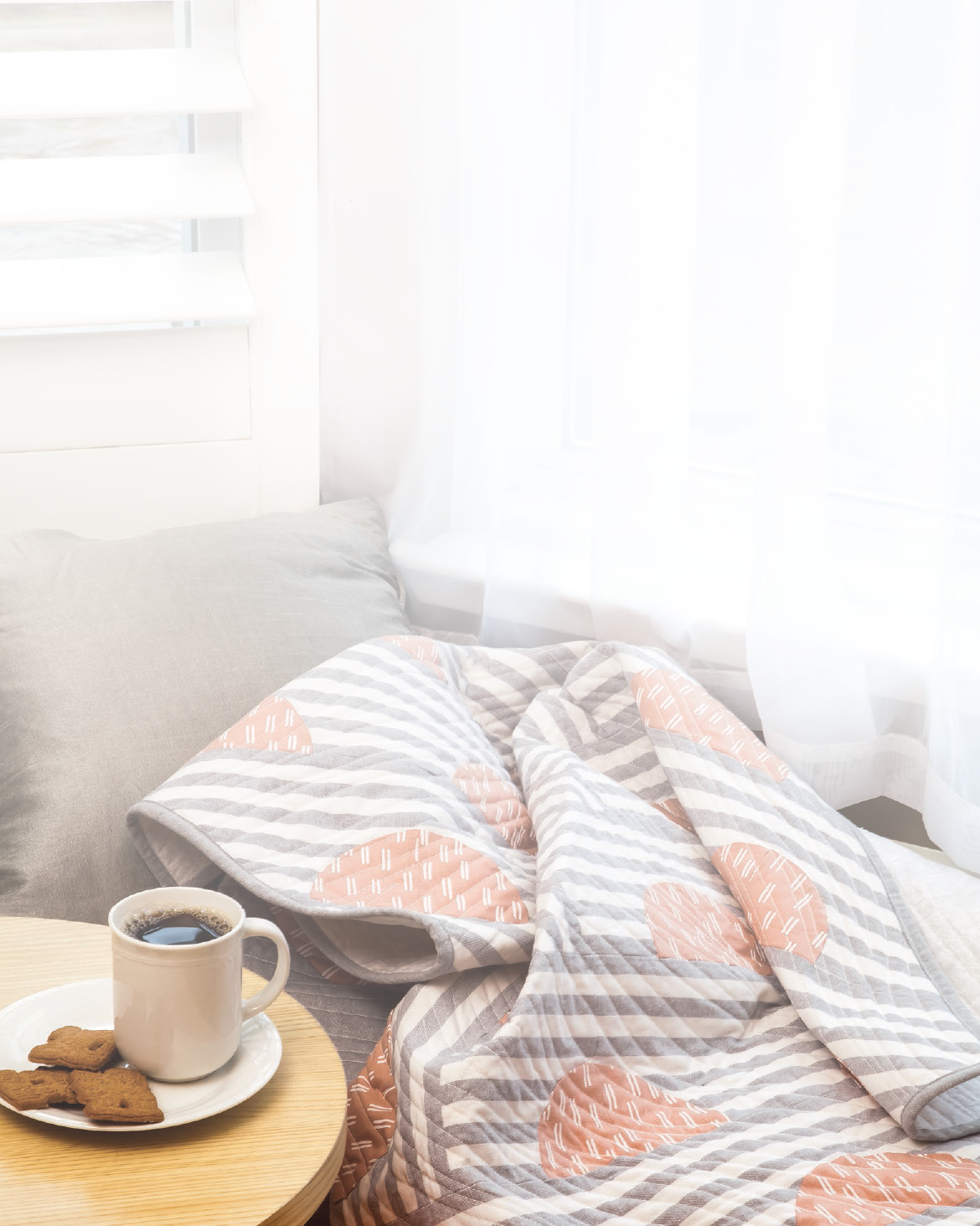 FOREWORD Like most modern quilters, I came to the craft by way of traditional quiltmaking. I lovedand still lovethe time-tested patterns, elegant blocks, and rich history of quilting. I read every book I could find on the subject and experimented with multiple techniques. I was hooked, and covered each bed in my home with a traditional quilt.
FOREWORD Like most modern quilters, I came to the craft by way of traditional quiltmaking. I lovedand still lovethe time-tested patterns, elegant blocks, and rich history of quilting. I read every book I could find on the subject and experimented with multiple techniques. I was hooked, and covered each bed in my home with a traditional quilt.
But eventually, I wanted more. Luckily for me and for all of us who love modern design, the Modern Quilt Movement was born. Fresh fabrics, bold and graphic designs, and the fearless breaking of the rules (press those seams open!) of this movement breathed new life into quilting. And youre about to meet two designers who have not only embraced this aesthetic, but also influenced its widespread appeal with their innovative and award-winning quilts. Daisy and Heather may work on different continents, but they share an instinctive understanding of the value of great design. Their work is unique, distinctive, and elegant.
Both of them are masters of precision, creating quilts that pack a graphic punch as well as a sense of subtlety. And when it comes to creating curves and inserting stripes, they know when to piece, and when to step back and let the fabric do the design work for them. It has been a privilege and an honor to work with these two creative quilters and follow the trajectory of their careers over the past five years. I cant wait to see where their talent takes them! Best,  Vivika Hansen DeNegre
Vivika Hansen DeNegre
Editor, Quilting Arts Magazine INTRODUCTION As quilt designers, we found each other on Instagram through our love of curved piecing in quilts. We followed each other on social media, and when Daisy almost moved to the state of Washington where Heather lives, our friendship grew stronger over discussions about life in the northwest. Daisy ended up moving to Norway instead, but when the topic of a shared book came up, we decided the distance would simply add to an already complementary design aesthetic.
We have distinct styles and perspectives, but we always come back to a shared love of curves. For this book, we both developed designs that pair exact circles, half-circles, and quarter-circles with bold lines and stripes. Sometimes the lines stretch across circles. Sometimes the lines are contained within circles. Sometimes the two never intersect, but the straight and the curved lines always complement each other. Weve treated the quilt like a canvas, and were excited to see the masterpieces you create.
This book has block-based patterns, patterns with improvisational piecing, patterns with complex piecing, and patterns simple enough for beginners. Its a mix of everything we love about curves and stripes, and we hope theres something everyone can enjoy.  GETTING STARTED CHOOSING FABRICS AND PROJECTS Selecting Fabrics No matter the design, the right fabric and color choices are essential to a successful quilt. Who decides whats right? You do! If you find a pleasing palette or include much- loved fabrics, then your quilt will surely be a winner. However, there are a few tips that may help you select a combination of fabrics that are sure to be pleasant when you step back and look at your finished efforts. Deciding on Your Palette While planning the quilt palette, stage strips of your fabrics to see how theyll look next to each other.
GETTING STARTED CHOOSING FABRICS AND PROJECTS Selecting Fabrics No matter the design, the right fabric and color choices are essential to a successful quilt. Who decides whats right? You do! If you find a pleasing palette or include much- loved fabrics, then your quilt will surely be a winner. However, there are a few tips that may help you select a combination of fabrics that are sure to be pleasant when you step back and look at your finished efforts. Deciding on Your Palette While planning the quilt palette, stage strips of your fabrics to see how theyll look next to each other.
Many patterns call for alternating colors, and it can be helpful to see how a strip set will look by arranging strips beforehand.  Consider prints carefully. With the exception of ombrs, solids automatically offer a consistent color. Some prints read as a single color too, and this can be helpful for adding interest without creating chaos in the final look of the quilt.
Consider prints carefully. With the exception of ombrs, solids automatically offer a consistent color. Some prints read as a single color too, and this can be helpful for adding interest without creating chaos in the final look of the quilt.  A print with one color and a neutral can read as a single color from a distance. Other prints that make sparing use of multiple colors may also create this effect.
A print with one color and a neutral can read as a single color from a distance. Other prints that make sparing use of multiple colors may also create this effect.
Dont let this dissuade you from using some large-scale prints! A wild print with a lot of colors and shapes and lines can be exciting when paired with a solid. The solid gives the print a little room to breathe and allows it to get the full attention it needs. Be careful with large-scale prints that change colors over the course of a large repeat; the final look of your quilt might seem unbalanced if you havent anticipated how the different colors will be placed throughout your quilt. 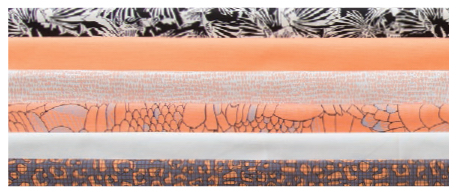
Next page
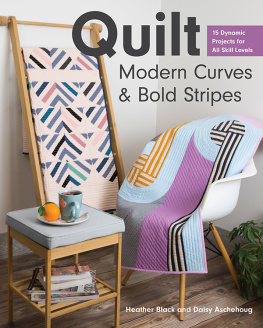
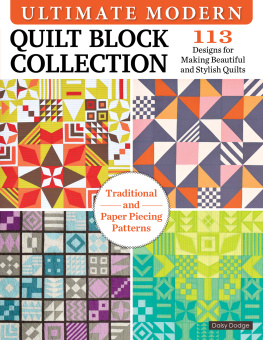

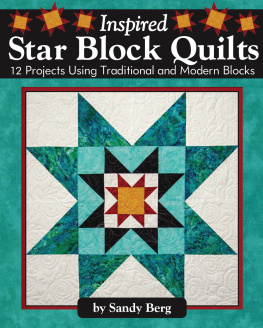
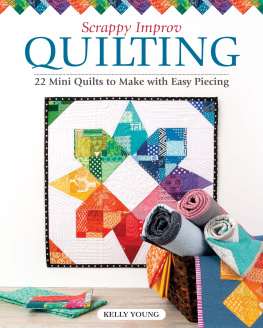
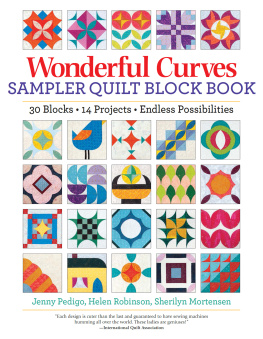
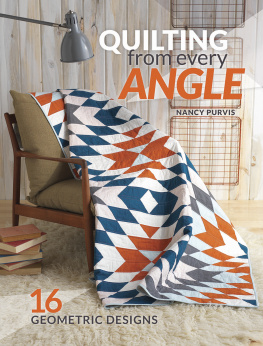
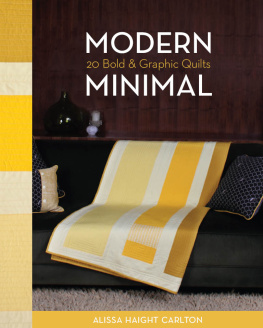

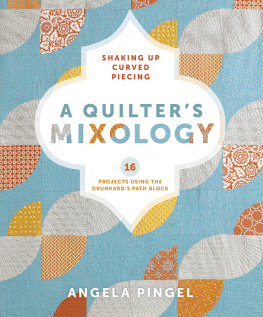
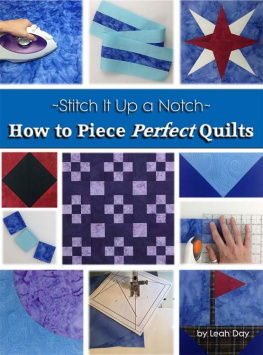
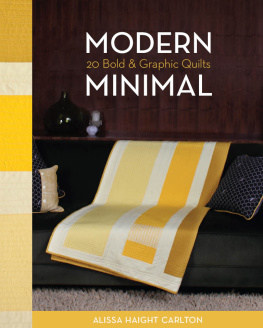
 DEDICATIONS I would like to dedicate this book to my daughter, CoraJoan, who showed more patience than believable for a five-year-old; my parents, Cory and Joan, who have always encouraged my creativity; and my late husband, Stephen, who knew me best. I would like to praise God for making me who I am and who I will be: being confident of this very thing, that He who has begun a good work in you will complete it until the day of Jesus Christ. Phil. 1:6 (NKJV) Heather Black For my parents,
DEDICATIONS I would like to dedicate this book to my daughter, CoraJoan, who showed more patience than believable for a five-year-old; my parents, Cory and Joan, who have always encouraged my creativity; and my late husband, Stephen, who knew me best. I would like to praise God for making me who I am and who I will be: being confident of this very thing, that He who has begun a good work in you will complete it until the day of Jesus Christ. Phil. 1:6 (NKJV) Heather Black For my parents, FOREWORD Like most modern quilters, I came to the craft by way of traditional quiltmaking. I lovedand still lovethe time-tested patterns, elegant blocks, and rich history of quilting. I read every book I could find on the subject and experimented with multiple techniques. I was hooked, and covered each bed in my home with a traditional quilt.
FOREWORD Like most modern quilters, I came to the craft by way of traditional quiltmaking. I lovedand still lovethe time-tested patterns, elegant blocks, and rich history of quilting. I read every book I could find on the subject and experimented with multiple techniques. I was hooked, and covered each bed in my home with a traditional quilt. Vivika Hansen DeNegre
Vivika Hansen DeNegre GETTING STARTED CHOOSING FABRICS AND PROJECTS Selecting Fabrics No matter the design, the right fabric and color choices are essential to a successful quilt. Who decides whats right? You do! If you find a pleasing palette or include much- loved fabrics, then your quilt will surely be a winner. However, there are a few tips that may help you select a combination of fabrics that are sure to be pleasant when you step back and look at your finished efforts. Deciding on Your Palette While planning the quilt palette, stage strips of your fabrics to see how theyll look next to each other.
GETTING STARTED CHOOSING FABRICS AND PROJECTS Selecting Fabrics No matter the design, the right fabric and color choices are essential to a successful quilt. Who decides whats right? You do! If you find a pleasing palette or include much- loved fabrics, then your quilt will surely be a winner. However, there are a few tips that may help you select a combination of fabrics that are sure to be pleasant when you step back and look at your finished efforts. Deciding on Your Palette While planning the quilt palette, stage strips of your fabrics to see how theyll look next to each other. Consider prints carefully. With the exception of ombrs, solids automatically offer a consistent color. Some prints read as a single color too, and this can be helpful for adding interest without creating chaos in the final look of the quilt.
Consider prints carefully. With the exception of ombrs, solids automatically offer a consistent color. Some prints read as a single color too, and this can be helpful for adding interest without creating chaos in the final look of the quilt.  A print with one color and a neutral can read as a single color from a distance. Other prints that make sparing use of multiple colors may also create this effect.
A print with one color and a neutral can read as a single color from a distance. Other prints that make sparing use of multiple colors may also create this effect.